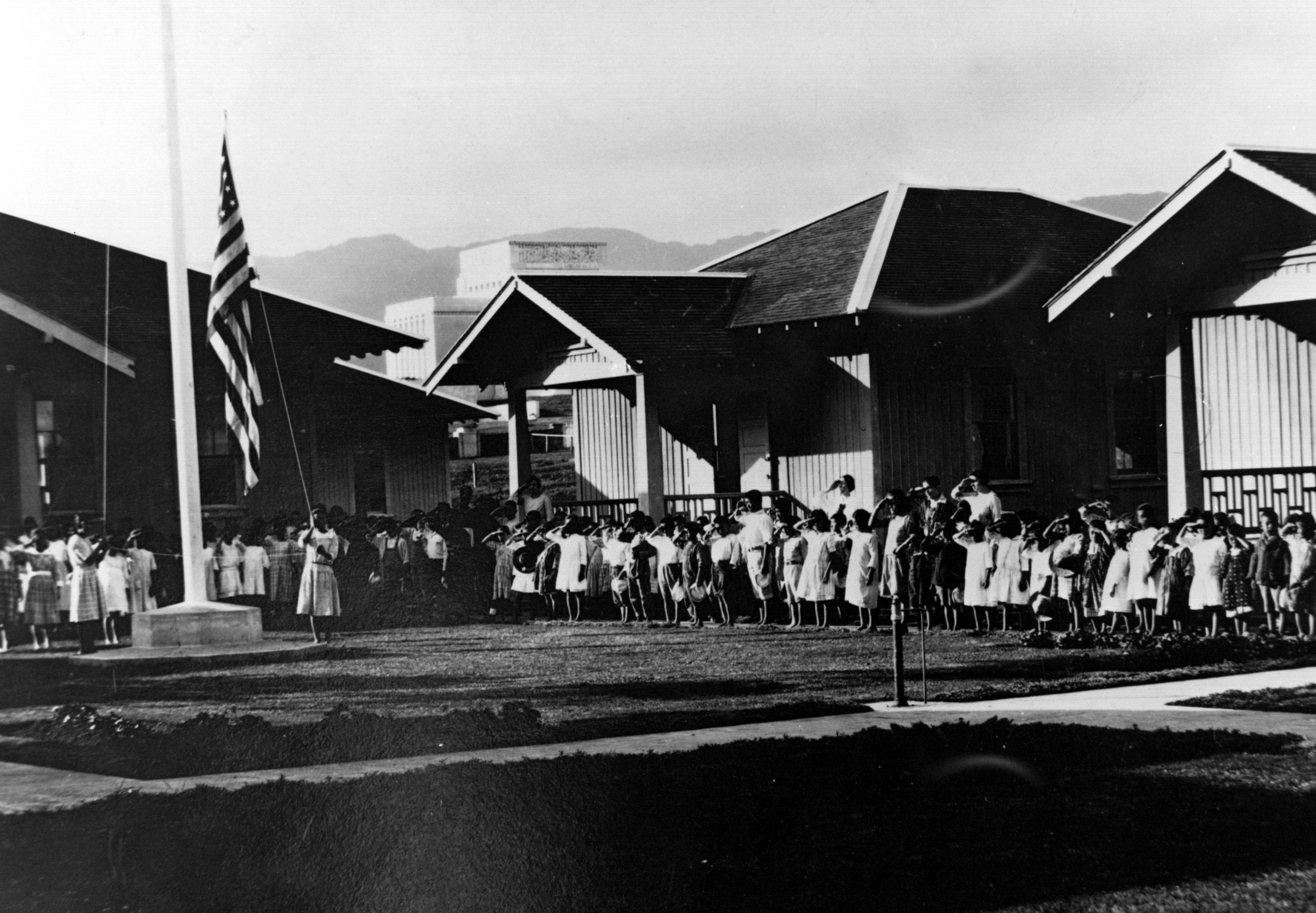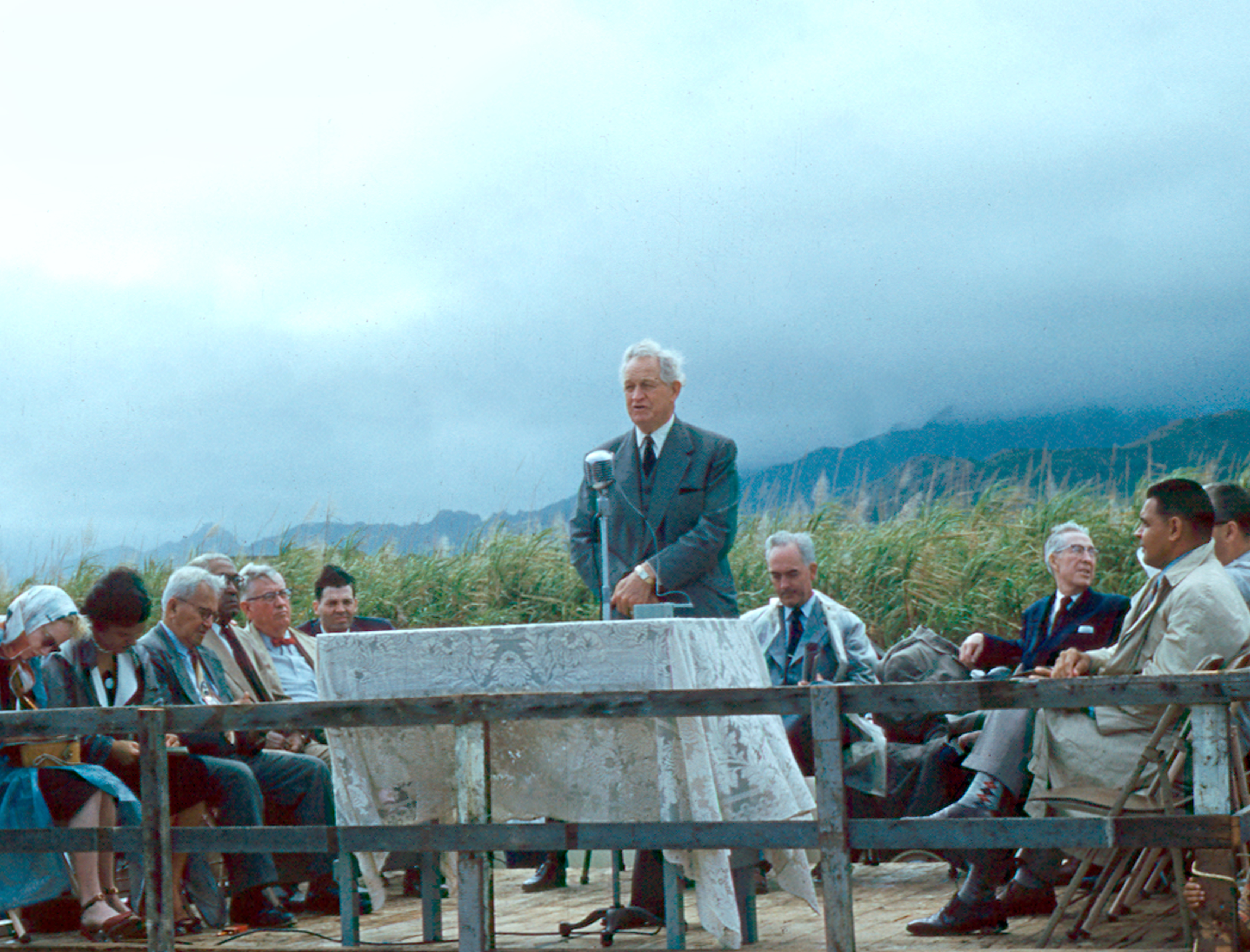100 Years in the Making
In December 1920, Elder David O. McKay embarked on a yearlong, apostolic mission around the world. His assignment was to visit, strengthen, and assess the needs of Latter-day Saints in the far reaches of the Lord’s vineyard. The journey, unprecedented in its scope, would become a prelude to the accelerated globalization of The Church of Jesus Christ of Latter-day Saints.

On that mission, Elder McKay visited Hawaii and envisioned a university that would be instrumental in furthering God’s work internationally. While visiting the Church’s schoolhouse and chapel near the temple in Laie, Elder McKay witnessed a flag-raising ceremony and assemblage of Saints that brought tears to his eyes. He marveled at the spirit of love and unity that prevailed in the ethnically diverse community, and he foresaw a university that would cultivate that spirit worldwide.
That experience left an indelible impression on Elder McKay, and 34 years later he returned to Laie as president of the Church to establish the Church College of Hawaii. “This is the beginning of the realization of a vision I saw 34 years ago,” he said at the groundbreaking as he recounted the flag raising he experienced on his first visit to Laie. “What an example in this little place of the purpose of our Father in Heaven to unite all peoples by the gospel of Jesus Christ.”
President McKay went on to make bold prophecies concerning this college that was yet to be built, let alone populated with students and teachers:
“The world [needs] men—true men—who cannot be bought or sold; men who will scorn to violate [truth]—genuine gold.” (Quoted in Henry H. Fick, “Education of the Heart,” Education 4, no. 2 [November 1883]: 178)
That is what this school is going to produce. More than that, they’ll be leaders—leaders not only on this island but everywhere. All the world is hungering for them. . . .
You mark that word, and from this school, I’ll tell you, will go men and women whose influence will be felt for good toward the establishment of peace internationally. (David O. McKay, “Church College of Hawaii Groundbreaking Address and Prayer,” February 12, 1955; quoted in Something Wonderful [Laie: Brigham Young University–Hawaii, 2012], 12–13)

President McKay’s prophetic declarations about BYU–Hawaii have guided the university for more than 65 years, and succeeding prophets, other Church leaders, and university presidents have continually reaffirmed the university’s international mission. Today BYU–Hawaii has the unique and inspired charge to serve Latter-day Saints from Asia and the Pacific who will help build God’s kingdom in those areas. It combines the multinational ethos of its students with the unifying light of the gospel to create an environment that develops lifelong learners, Christlike leaders, and builders of their families, communities, and stakes of Zion worldwide.
Of course, BYU–Hawaii did not fill this role overnight. Richard Wootton, one of the original faculty and the second president of the university, once remarked: “Notwithstanding the powerful and wonderful prophecies of President McKay, the campus did not spring forth fully formed and beautiful. Every part of every function had to be created” (Something Wonderful, 5).
With this year marking the centennial of the flag raising, the BYU–Hawaii of today has been 100 years in the making. And the university will continue to grow, develop, and progress as it strives to fulfill its prophetic purpose as declared by the Lord through His servants. As President McKay said when he visited the campus a few years following the groundbreaking: “What hath God wrought! And in vision I see great results from this college in Hawaii. I congratulate all who have been associated with it, . . . and with all my heart I bless you for the duties ahead” (Something Wonderful, 4).
